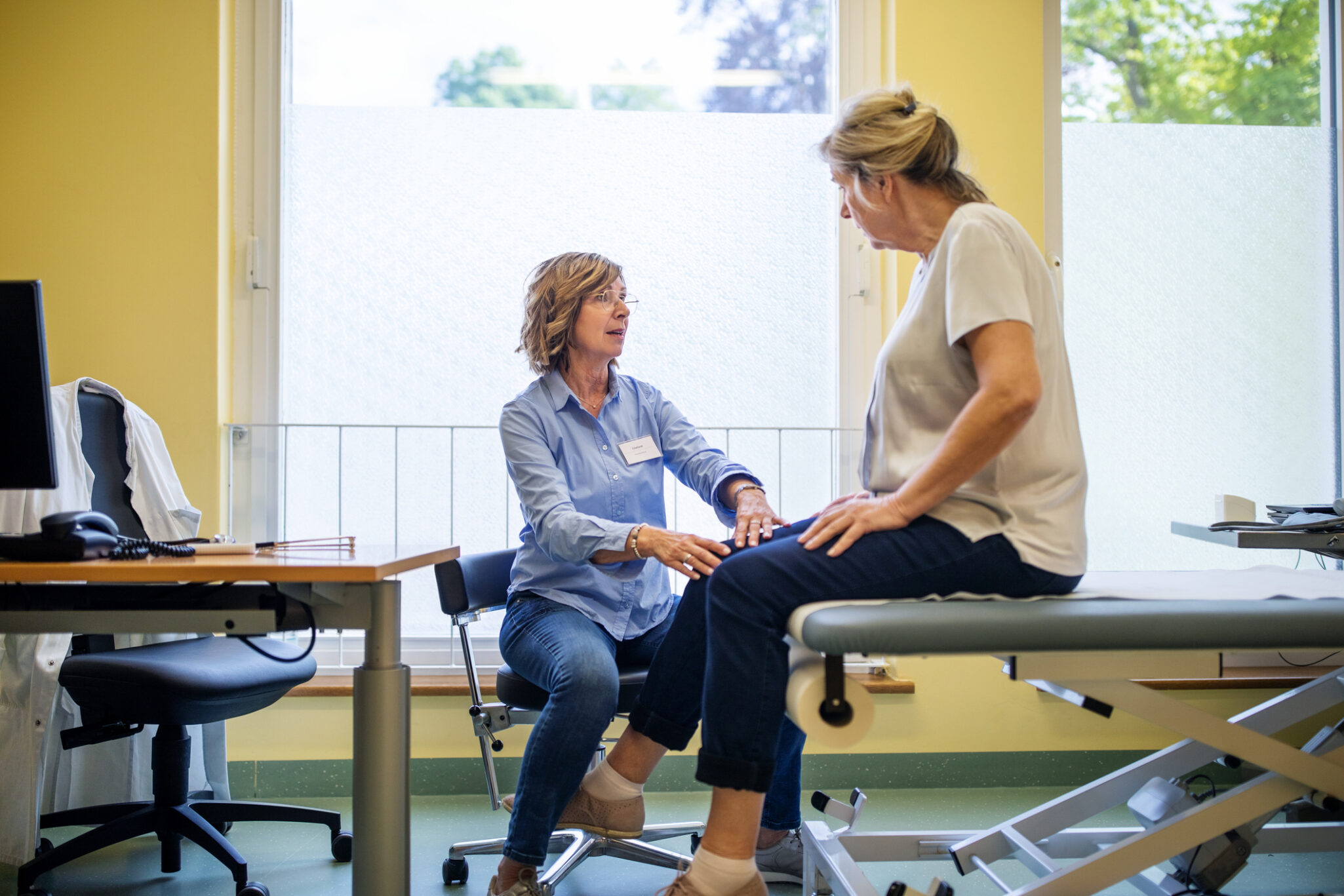Timeline for Knee Replacement and Recovery for Seniors

Knee replacement surgery isn’t just for athletes suffering from injuries — it can provide remarkable results for adults of all ages. Older adults are candidates for a knee replacement if they have swelling, stiffness, and pain that makes it difficult to walk, stand or climb stairs, bothers them while resting, or disrupts their sleep. Knee replacement surgery can lead to reduced pain and improved mobility, and you can achieve the best results by taking a proactive approach to your recovery.
Although the timeline is different for every person, knowing what to expect before, during and after surgery can help you be prepared. Here are some common questions about knee replacement recovery time:
· How long will it take to recover?
· What can I do after the surgery?
· How can I make sure it’s successful?
· Where can I get help afterward if I need it?
Having a game plan for your recovery after surgery is vital to a quick and full recovery. You may need to plan to stay in a rehabilitation center or have someone help you at home the first few weeks. You’ll probably feel fully recovered after 6 to 12 months. Read on to learn more about the timing of a typical recovery from knee replacement surgery.
Surgery Timeline
Pre-Op
Use the time prior to knee replacement surgery to prepare for your return home.
Prevent fall risks: It’s essential to prevent a fall, which will complicate your recovery.
If you climb stairs to reach your bedroom or living space, set up a comfortable sleeping and living space on the ground floor. If you have to use stairs, clear the stairway, and ensure the rails are securely fixed. Clear tripping hazards (appliance cords, loose rugs, bulky furniture) from your living and dining areas.
Add safety features: Add a raised toilet seat and grab bars to your shower, and consider getting a shower chair so you won’t have to stand the whole time. Use a stable living room and dining room chair with a firm seat and raised arms for support.
Cool it: Your knee will be swollen and tender after surgery. Make sure you have an ice pack (or a bag of frozen peas) already in your freezer. You’ll also need a comfortable place to rest and elevate your leg.
Surgery
The operation lasts about one to two hours. You’ll receive general anesthesia, or an epidural anesthesia that blocks pain below the waist. An incision is made over your kneecap, and the damaged portions of cartilage and bone removed. Your surgeon then inserts and attaches the new artificial joint and closes the incision.
Immediately After Surgery
When you’re out of surgery, you’ll receive medication, which may include pain medication, antibiotics to prevent infection and blood thinners to prevent clots. You may take these by mouth or via an IV, which will also provide fluids. Most post-op patients wear compression stockings to improve circulation, and some need a urinary catheter for a while.
Knee Replacement Recovery Time: In Hospital
Day 1
You’ll be encouraged to get moving right away to get your strength back; at first, you’ll walk with an assistive device such as a walker or crutches. Your physical therapist will teach you exercises to regain your knee mobility and encourage blood flow. Learn more about the importance of following through with rehabilitation therapy after surgery.
Day 2
You may be switched to oral pain medication, and you can probably eat regular food. Your therapist will teach you how to watch for signs of infection, clots or chest congestion. You should be able to get to the bathroom with a little help.
Day 3
Your doctor will confirm if the incision is healed enough for you to take a shower. Once you get the OK, shower with the dressing on. Then remove the dressing, gently pat the area dry, and apply a new dressing. Don’t use any creams or lotions on the area other than what your doctor prescribes. Your stitches or staples should be healed and removed in about two weeks.
Day 4
Unless you had outpatient surgery, you’ll probably spend up to a week in the hospital after your surgery. You may be ready to return home if you can get in and out of bed or a chair without help and use the bathroom unassisted. You may still be using a walker or crutches. Some people recover best with a short stay in a rehabilitation center like ours at Walnut Place, where they can fully focus on their health, continue supervised physical therapy, and get help with tasks like showering and dressing.
Knee Replacement Recovery Time: Caring for Yourself
Week 1 to 3
After you’re discharged from the hospital, you may need help with some daily activities. In this first stage of knee replacement recovery time, it may be difficult or painful to stand or move while showering, dressing or preparing meals, or during physical therapy exercises. If you’re staying at home, ask a family member or friend to help you run errands or drive you to appointments. Try to walk every couple of hours when you’re awake. You should be feeling less and less pain during this time.
Weeks 4 to 6
Your stitches or staples should be out by now, and you’re able to fully immerse your leg in the tub or a pool. You should be feeling more like yourself again. Ask your doctor if you can switch to over-the-counter painkillers such as acetaminophen or ibuprofen.
At this stage of recovery, there should be a significant improvement in the weight your knee can support, and you should be able to bend your knee more easily. If healing is progressing well, your physical therapy exercises will become more challenging, and you may be practicing walking without support. You may still need some help with driving and grocery shopping. Ask your doctor or therapist if you can resume activities like gardening or light housework. High-impact activities like jogging or tennis are still out for now.
Weeks 7 to 12
By now, things should be more normal. At this point in knee replacement recovery time, you should have almost 100% range of motion in your knee and be free from pain. You should be able to walk on your own and perform more physically challenging tasks like driving, housekeeping and yardwork. Because you’re feeling better, it may be tempting to forego your physical therapy exercises. However, these exercises are critical to regaining your full strength and preventing reinjury of your new knee.
Follow-Up Care
During the 12 months after your surgery, your doctor will schedule regular follow-up appointments to see how you’re doing. At the one-year mark, if all is well, you probably won’t see your doctor again till next year. It’s good to know that over 90% of knee replacements are still working 15 years after surgery.
A Short Rehabilitation Stay Can Speed Your Recovery
If you’re planning for a knee replacement surgery, you can rest assured that our team of professionals will be there to help you down the road of recovery with plenty of comfort and care in mind. Walnut Place offers unique one-on-one care that will help ensure a successful recovery. Contact us to learn more or schedule a tour of our senior rehabilitation center.
You Are Invited to Experience Our Community!





